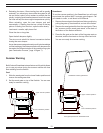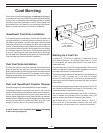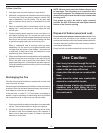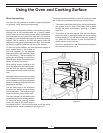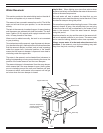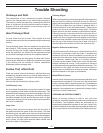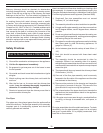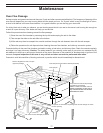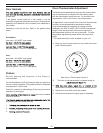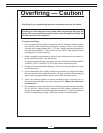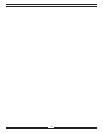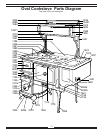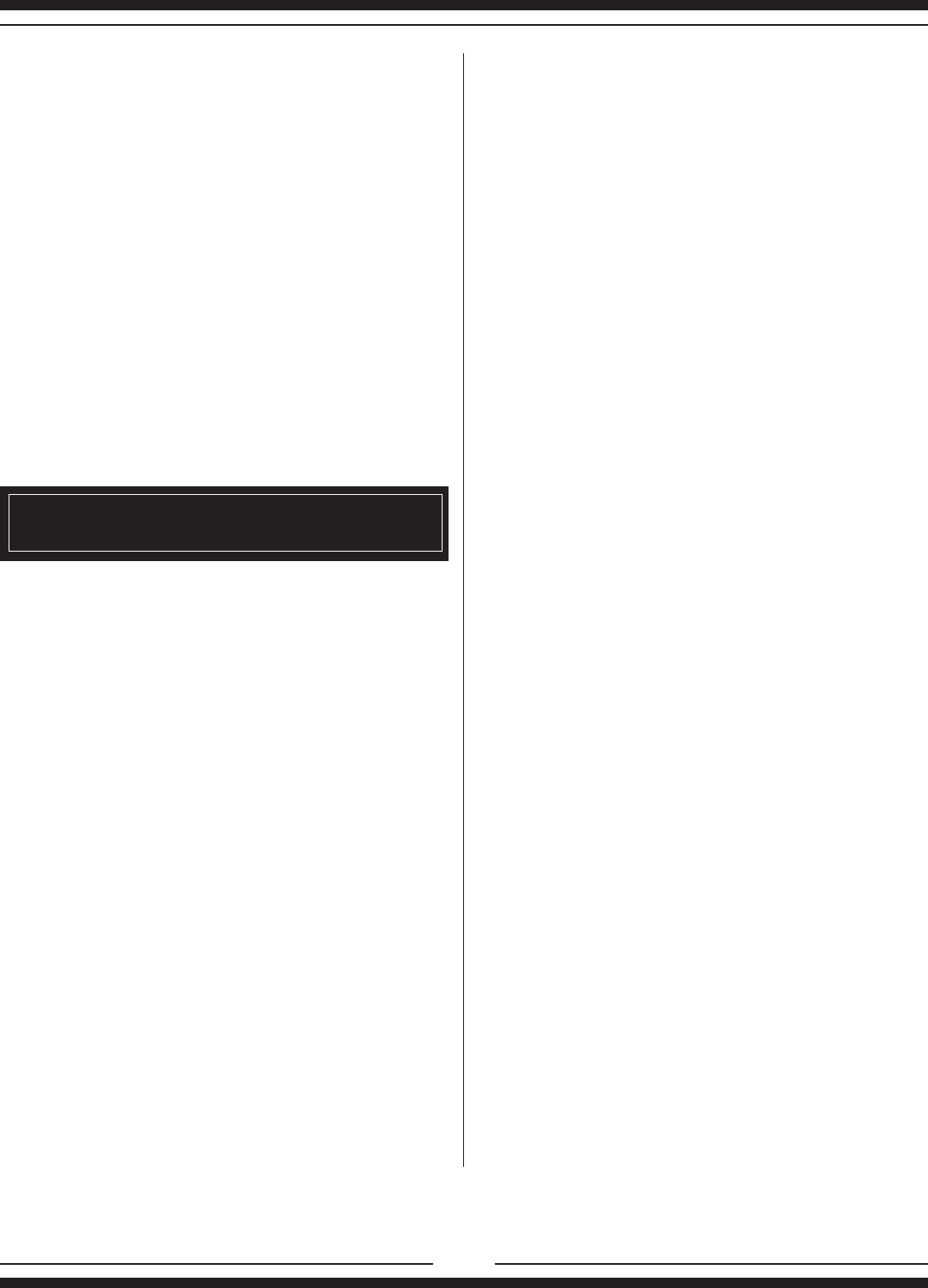
26
Here is a checklist to follow when installing or checking a ue
pipe assembly. It is based on the requirements found in the
Canadian Standards Association’s Installation Code for Solid
Fuel Burning Appliances and Equipment (Standard B365).
1) Single-wall flue pipe assemblies must not exceed
3 metres (10’ ) in overall length.
2) The assembly should be as short and direct as possible.
3) A single-wall ue pipe assembly must have no more than
two 90 degree elbows; use 45 degree elbow, wherever
possible.
4) Do not use galvanized ue pipe because the coating can
vaporize at high temperatures, emitting poisonous gases
and leaving the pipe thin and weak.
5) Flue pipes for woodburning appliances need to be thicker
than those used for other re-burning appliances; 24
gauge for 150 mm (6”) .
6) Joints between pipes should overlap at least 30mm (1
1/4”).
7) Each joint should be secured with three sheet metal
screws.
8) The assembly should be constructed to allow for
expansion. Elbows in an assembly allow it to expand;
straight ue pipe assemblies should have one section left
unscrewed and secured with an inspection wrap clamped
around the joint.
9) The pipes should slope up towards the chimney at least
20 mm/metre (1/4 in/ft).
10) One end of the ue pipe assembly must be securely
fastened to the ue collar of the appliance and the other
end fastened to the chimney.
11) There must be provision for the cleaning and inspection
of the pipes by removal of the pipe. The removal of the
pipes should not require moving the appliance.
12) The crimped ends of the pipes should point towards the
appliance so that condensation drains to the appliance
and does not leak out.
13) A ue pipe must never pass through a combustible oor
or ceiling, or through a concealed attic, roof space, or
closet.
Flue pipe assemblies should be stable and secure. To check
the stability of a ue pipe assembly, grasp it at its mid-point
and give it a good shake. If it is properly constructed, it will
have little or no movement.
Masonry chimneys should be checked for deterioration
including damaged bricks, crumbling and missing mortar,
cracks in the drip cap at the top of the chimney, and loose
ashings at the roof line. The liner should be checked for
cracks and misalignment, and its size should be 6” (15.24 cm).
An existing factory-built metal chimney needs a careful
inspection. Your new cookstove should be connected only
to factory-built chimneys approved to ULC Standard S629 in
Canada and UL 103HT in the U.S. Possible problems with
an older metal chimney can include a warped or buckled
liner caused by the heat of a chimney re, corrosion of the
outer shell, a loose ashing, and a lack of proper support.
Any discolouration of the metal shell near a joint indicates
that the insulation has settled. A damaged metal chimney
should be replaced with a new approved chimney which will
be safer and will perform better.
Safety Practices
What To Do If You Have a Chimney Fire
1) Close all the combustion air dampers on the appliance.
2) Call the re department immediately.
3) Be prepared to get everyone out of the house in case
the re spreads.
4) Go outside and check to see that hot ashes do not ignite
shingles.
5) Watch anything near the chimney that could catch re
and burn.
6) After the re has run its course and the chimney has
cooled, have the chimney thoroughly inspected to
determine if it sustained any damage.
7) Resolve to inspect and clean the chimney more often to
prevent another chimney re.
Flue Pipes
Flue pipes carry the exhaust gases from the appliance ue
collar to the chimney. The ue pipe assembly is an extremely
important part of a woodburning systems and should be
carefully planned and installed.




